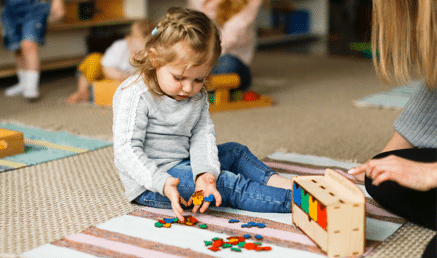
“It’s our polite nudge in the ribs to help you and your team stay organised and on task.”
This week’s subject is Community engagement.
Element 6.2.3: The service builds relationships and engages with its community.
What practices is your Service implementing to build and strengthen ties with the local community?
Have you and your team recently reflected on the practices implemented to maintain consistent and meaningful connections with your local community?
Consider how your Service can engage in new and meaningful ways to connect with the local community by implementing some of the following:
-
- connecting with, promoting, partnering with and visiting local businesses
- partnering with local businesses, such as restaurants, grocery stores, or toy stores, for sponsorships, donations and discounts for families/the Service
- providing opportunities for community members, including parents, retirees, or high school students, to volunteer at the Service to assist with activities, events, excursions or projects
- establishing parent advisory committees or councils to provide feedback, suggestions, and input on the Service’s operations, programs, policies, and practices to foster collaboration and parent/community involvement
- build on or establish relationships with local schools; arrange transition to school visits and other joint initiatives, such as literacy programs, storytelling sessions, or workshops
- develop a travel training program for year 6 students transitioning to High School (School age care)
- foster your Service’s relationship with local aged care facilities by implementing a number of initiatives to strengthen the connection (pen pal program, framing and gifting children’s artworks, organizing a talent show to perform during a visit etc.)
- frequent visits to the local library
- create a community engagement newsletter to share your Service’s community involvement with families and relevant stakeholders and request feedback/ suggestions
- create a community garden or arrange visits to your local community garden
- create a “Pantry for the People” to be set up at a location within your local community and encourage donations from families. Take children on regular visits to the Pantry to restock and maintain
- organise a raffle to raise funds for stock for “Pantry for the People” or to donate to local community organisations in need. Request donations from local businesses such as items to make up hampers, vouchers from local hairdressers/beauty salons, dance lessons or other extracurricular activities, car maintenance services (mechanic, auto electrics, car wash/detailing) etc. Sell raffle tickets within your Service and the local community.
- connect with your local Aboriginal Education Consultative Group (AECG) to seek advice and support around the development of an age-appropriate Acknowledgement of Country for your service
- collaborate with local Aboriginal communities, organisations, or Elders to facilitate cultural responsiveness. Invite guest speakers, arrange trips to cultural sites, or participate in community events to strengthen connections with Indigenous communities
- continuously reflect on and evaluate the effectiveness of Aboriginal perspectives in the program. Seek feedback from staff, families, and community members to identify areas for improvement and ensure that cultural teachings are authentic and meaningful
- create a “Community Information” board at your Service and continually update with local events, opportunities and relevant news and information
- support your local businesses by advertising their business/products/services in your Newsletter or Community Information board
- Implement the “Eight Ways of learning” into the pedagogy of your Service
- develop a Reconciliation Action Plan (RAP)
- Attend and participate in school events and activities (School age care)
Allocate some time at your next meeting to reflect on what practices are being implemented to strengthen community connections and involvement and discuss ways in which the Service can improve, providing educators opportunity to make suggestions for meaningful ways for your Service to connect with the community. Document your quality practices in your self-assessment and update your goals in your Quality Improvement plan.
Resources:
Building understandings of Aboriginal and Torres Strait Islander cultures and peoples
Reconciliation Action Plan (RAP)
Acknowledgement of Country and Welcome to Country
Beginner Tips for Connecting with Community
Community partnerships to improve literacy
Children’s agency in communities: A review of literature and the policy and practice context
Build Relationships with Community
Establish and Maintain Community Links
Within System7 go to Quality Area 6/ Module 25 to submit self-assessment notes and if required, open a QIP issue if you identify any areas of improvement.
Resources, NQS Element, Regulation and System7 links
National Quality Standard – QA 6/ 6.2.3- Community Engagement
National Regulations – 73
System7 Module – QA6 / Module 25
If you have any questions send us a note via the Contact page here!




